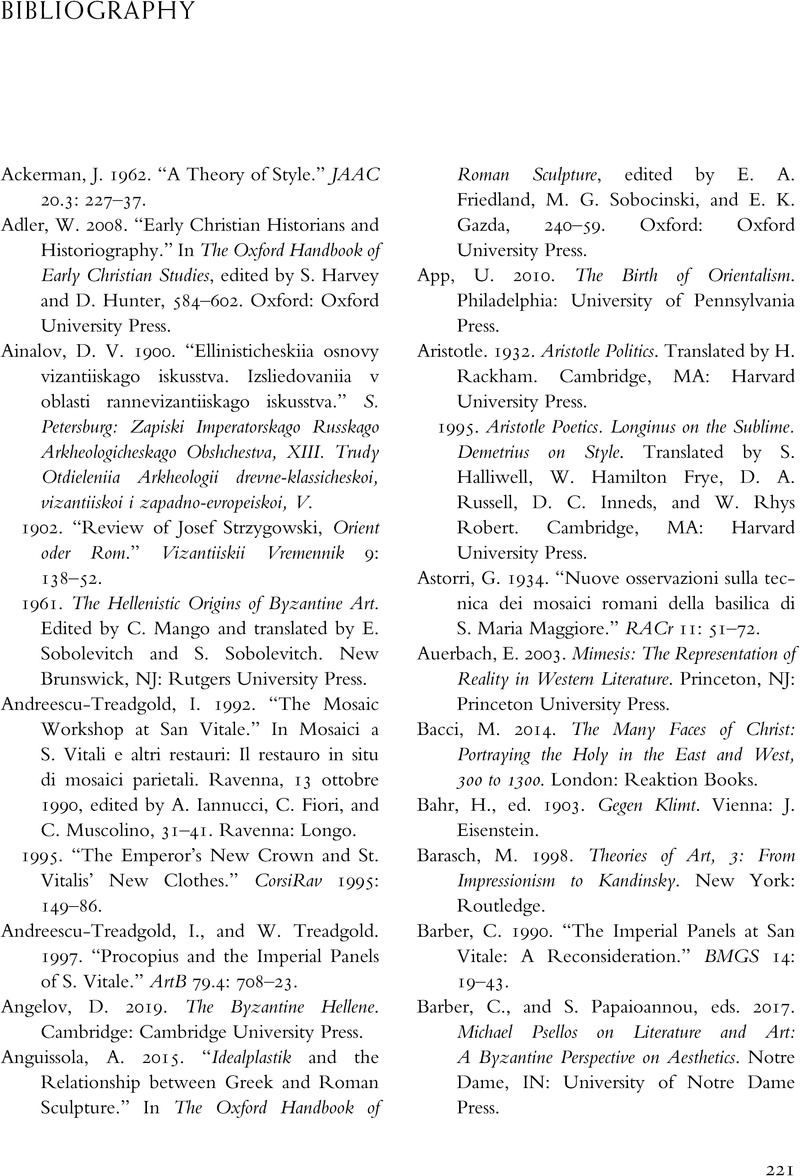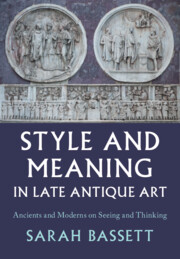Bibliography
Published online by Cambridge University Press: aN Invalid Date NaN
Summary

- Type
- Chapter
- Information
- Style and Meaning in Late Antique ArtAncients and Moderns on Seeing and Thinking, pp. 221 - 240Publisher: Cambridge University PressPrint publication year: 2024



